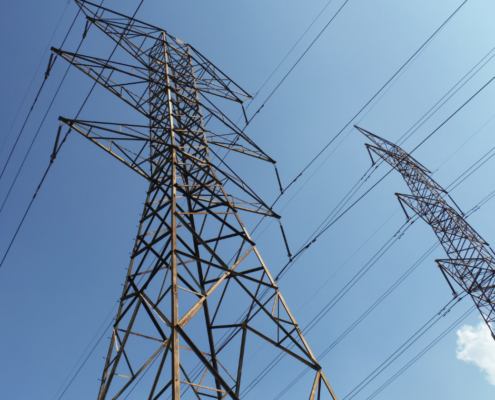Last Updated on July 12, 2022 by Mary Pressler
ERCOT: Texas Has Enough Generation Capacity for Summer 2022
ERCOT has announced that Texas has enough generation capacity to avoid rolling blackouts in summer 2022 (June-September). In their latest Seasonal Assessment of Resource Adequacy, ERCOT forecasts a record-breaking peak demand of 77,317 MW for summer, but the grid will have 91,392 MW of available capacity.
- The capacity forecast includes 473 MW of natural gas, wind and solar generation capacity that are expected to come online before summer.
- ERCOT will also have 2,035 MW of battery storage, which can help stabilize grid voltage and frequency. However, this is not counted in the analysis because batteries cannot provide sustained capacity.
- ERCOT also has access to 2,895 MW of emergency resources, which can be deployed in an extreme scenario.
- The peak demand forecast is actually 77,884 MW, but distributed solar power is expected to reduce net demand by 567 MW.
There is a 22.8% reserve margin for 2022, which represents an improvement compared with 2020 (12.6%) and 2021 (15.7%). The reserve margin will continue to improve during the next five years, as more power plants are brought online:
| Year | Summer Peak Demand | Available Capacity | Reserve Margin |
| 2023 | 76,505 MW | 104,174 MW | 36.2% (27,669 MW) |
| 2024 | 77,730 MW | 113,614 MW | 46.2% (35,884 MW) |
| 2025 | 78,758 MW | 114,881 MW | 45.9% (36,123 MW) |
| 2026 | 79,782 MW | 115,043 MW | 44.2% (35,261 MW) |
| 2027 | 80,575 MW | 115,038 MW | 42.8% (34,463 MW) |
In spite of the 22.8% reserve margin for summer 2022, the 77,317 MW peak demand represents a new record for Texas. The highest demand reported so far has been 74,820 MW on August 12, 2019.
- In 2021 there was skepticism towards ERCOT’s favorable forecast for summer, since the grid was not prepared for Winter Storm Uri in February.
- ERCOT uses rolling blackouts to cut demand when the grid’s operating margin falls below the safety limit of 1,000 MW.
According to the National Oceanic and Atmospheric Administration (NOAA), 2022 had the fifth-warmest April on record, and there is a >99% probability that this year will be among the top 10 warmest so far. This means the electricity demand from air conditioning systems will be high during summer, and grid operators must be well prepared.
Does ERCOT Have a Rolling Blackout Schedule?
Rolling blackouts are used as an emergency measure when the ERCOT grid is incapable of keeping up with demand. Since this is an unpredictable situation, there is no rolling blackout schedule. Instead, ERCOT uses the Energy Emergency Alert system to inform the current condition of the grid and decide if blackouts are necessary. There are five levels of alerts:
- Normal Conditions: The ERCOT grid is operating normally with a reserve margin of over 3,000 MW.
- Conservation Alert: The operating margin has decreased below 3,000 MW, and ERCOT asks consumers to conserve energy.
- Energy Emergency Alert Level 1 (EEA1): The operating margin has decreased below 2,300 MW and is not expected to recover within 30 minutes. ERCOT will use all power supplies available, including interconnections with other grids.
- Energy Emergency Alert Level 2 (EEA2): The operating margin has decreased below 1,750 MW and is not expected to recover within 30 minutes. ERCOT will start disconnecting large consumers who have a contractual agreement to be switched off during emergencies.
- Energy Emergency Alert Level 3 (EEA3): The operating margin has decreased below 1,000 MW and is not expected to recover within 30 minutes. As a last resort, ERCOT uses rolling blackouts to control demand.
There is a 6% chance that ERCOT will declare EEA1 during summer 2022. This is an improvement with respect to 2021, where the probability was twice as high (12%). The risk of an energy emergency alert is higher between 6pm and 8pm, peaking at 7pm.
When the ERCOT grid reaches EEA3, transmission companies are instructed to disconnect load at their discretion. These interruptions are called “rolling blackouts” because different parts of the grid are switched off by turns and temporarily. This is exactly what happened in February 2021, but the power shortage was so severe that the interruptions became extended blackouts.
Rolling blackouts or rotating outages are defined as controlled electricity service interruptions that normally last from 10 to 45 minutes.
 ERCOT Demand Forecast for Summer 2022
ERCOT Demand Forecast for Summer 2022
In their Seasonal Assessment of Resource Adequacy for June-September 2022, ERCOT considered normal operating conditions and several risk scenarios of increasing severity. The grid is expected to have enough capacity under normal conditions and five of the seven risk scenarios. Rolling blackouts would only be needed in the two most pessimistic scenarios, which have a very low probability.
The following table summarizes the seven risk scenarios considered, and the reserve capacity needed in each case. Consider that the available reserve capacity is 14,075 MW.
| Scenario | Reserve Capacity Required |
| 1) Forecasted Peak Load
Typical Unplanned Outages Typical Renewable Output |
4,105 MW |
| 2) High Peak Load
Typical Unplanned Outages Typical Renewable Output |
6,027 MW |
| 3) Forecasted Peak Load
High Unplanned Outages Typical Renewable Output |
8,090 MW |
| 4) Forecasted Peak Load
Typical Unplanned Outages Low Renewable Output |
12,823 MW |
| 5) Extreme Peak Load
Typical Unplanned Outages Typical Renewable Output |
8,355 MW |
| 6) Extreme Peak Load
Extreme Unplanned Outages Typical Renewable Output |
17,950 MW |
| 7) High Peak Load
Extreme Unplanned Outages Extreme Low Wind Output |
24,726 MW |
As you can see in the table above, the Texas grid would only suffer blackouts under a combination of extreme conditions: high peak load, extreme unplanned outages, and a low electricity output from renewable sources.
NERC Reliability Assessment for Summer 2022
The North American Electric Reliability Corporation (NERC) publishes annual reliability assessments for US power grids, and this includes the ERCOT region. The NERC agrees that ERCOT has improved its reliability in recent years, adding capacity and increasing the reserve margin to 22.8%. However, they recognize the risk factors that can bring the grid to its limit:
- Extreme peak demand
- Low wind
- High outage rates from thermal generators
This unfavorable scenario is more likely if Texas faces extended drought conditions. Hot weather increases consumption due to air conditioning, and it also increases the risk of power plant failures precisely when the grid needs more electricity.
This year, NERC’s assessment of the ERCOT grid is much more favorable compared with 2021. In the aftermath of Winter Storm Uri, there were major concerns that the grid would face rolling blackouts again during summer.
Unfavorable weather has become a challenge for power grid operators in the US. Climate Central conducted a detailed analysis of power outages, including data from the US Department of Energy, and they determined that weather-related outages have increased by 67% since the year 2000.
ERCOT has more than enough generation capacity to meet peak demand in summer 2022, with a reserve margin of 22.8%. Texas should be free of rolling blackouts this year under normal operating conditions and most risk scenarios considered. However, both ERCOT and NERC agree that extreme heat is a risk factor that cannot be ignored.
Homes and businesses can contribute to grid reliability by implementing energy efficiency measures, while reducing their power bills in the process. Setting back the thermostat 7-10°F is a quick and simple measure that can reduce the energy consumption of HVAC systems by up to 10%.
Trackbacks & Pingbacks
-
[…] for all the solar panel installs. This year 2022 the Greater Dallas Fort Worth area was spared from rolling blackouts. Let’s hope this extends through the coming […]
Leave a Reply
Want to join the discussion?Feel free to contribute!











When are you all going to get this shit straight. It’s July 26 and rolling blacks again. It’s too hot in Texas without A/C!
Exactly!
I’m also getting the feeling they’ll do the blackouts again next month or so, just like winter 2021. It’s already going to be below freezing and it’s not even February yet. We went 5 days in a drafty 3rd floor apartment with power (or water). Luckily we had a fireplace and lots of small trees in our parking lot that we could burn. My daughter was 3 years old at the time and it was really scary, especially at night.